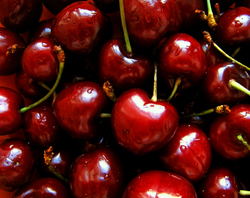By Athena Staik, Ph.D.

The latest findings in neuroscience place love and healthy relationships at the center of what optimizes our health, physically and emotionally, and the quality of our lives in general.
Perhaps no experience in the course of our lifetime, whether conscious or subconscious, consumes more energy, or produces more intense emotions, and up and down extremes in thinking or behaving, than the drive to secure the heart of that special person we seek, and
to make a difference in some way – to matter and bring value to the relationship.
A growing body of scientific evidence shows that
the way we express love and care for one another, from the time we are infants and throughout our lives, directly affects the health and physical structure of our brains and nervous systems.
Certain actions, ones that convey emotional messages of kindness, caring and love, can affect positive changes on partners and their relationship by releasing a particular feel-good hormone, oxytocin, which amps up the love-connection pathways of the brain. Oxytocin is a hormone that is released by the pituitary gland and stimulates the release of other chemical hormones in the heart.
According to neuroscientist Alan Schore, author of several groundbreaking books, such as
Affect Regulation and the Origin of the Self: The Neurobiology of Emotional Development and
Affect Regulation and the Repair of Self, one of the most important conclusions from neuroscience is that the human brain, throughout life, is predisposed to be physically molded, in ongoing ways, by relational experiences and interactions in social learning contexts.
Though we are born with the equipment for these social behaviors, the wiring of neural pathways to these areas of the brain must be activated. Early experiences with primary caregivers can form a template for love later in life, with enduring effects on partners’ ability to meaningfully connect. Additionally, the inevitable challenges in couple relationships, and the tendency to resolve conflicts in ways that escalate reactivity, can also affect or weaken the wiring of these caring-responses.
To naturally energize feelings of love and safety between you and your partner, here’s a list off 20 actions that, essentially, amp up the love by amping up one another’s sense of safety in the relationship.
- Show interest in what your partner says by pausing to make eye contact, drawing near to listen.
- Physically touch your partner before you get out of bed in the morning.
- Express nonsexual affection with hugs, touching, holding hands, embracing, and the like.
- Give a 20-second hug to your partner, at mutually agreed upon times, such as before leaving for work.
- Talk about a trait you appreciate about your partner when both of you are present with family.
- Send an “I’m thinking of you” message via email or text at least once during work hours.
- Say one thing you admire about your partner, when they are not present, to a family member(s).
- Give your partner a 5- or 10-second kiss at least once each day.
- Look warmly into your partner’s eyes for a few seconds before and after a kiss.
- Express something you appreciate about your partner, when they are not present, to a friend(s).
- Tenderly touch your partner before you turn to go to sleep.
- Say something you appreciate about the other when both of you are present with friends.
- Massage your partner’s feet and look warmly into their their eyes (take turns).
- Listen empathically when your partner vents without giving advice, and validate their feelings.
- Affirm your partner’s love-actions with statements as, “I love when you express your love by …”
- Tell your partner what you love about their physical appearance with a warm smile, eye contact and touch.
- Find humor in something that would normally be a frustration for you, and make one another laugh instead.
- Smile warmly at one another in key moments, locking eyes for 5 seconds.
- Ask positive momentum questions, ones that start with, “Isn’t it wonderful that … ?”
- Express awe for something you love about life with enthusiasm with, “I love that … how about you?”
Hugs, eye contact and kisses grow new neurons, and connect them in healthy ways to other neurons. They will

strengthen your relationship.
Studies show they also reduce stress, enhance the immune system, lower blood pressure, and in general affect positive feel-good changes to your mood. The release of hormones, such as oxytocin, endorphins, serotonin, and dopamime, among others, nourishes the cells of the body and makes partners feel-good in relation to one another. In couple relationships, more specifically, they strengthen the emotional connection, and, as they increase each partners sense safety in the relationship, they also amp up the desire of each partner to repeat more of the love-response behaviors.
You can literally kiss, hug, and use your eyes and touch, to energize and amp up your love experience.
Relationship consultant, author, licensed marriage and family therapist, Dr. Athena Staik shows clients how to break free of anxiety, addictions, and other emotional blocks, to awaken radiantly healthy lives and relationships.























































